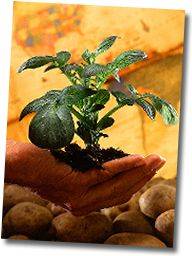Azalea leaf and flower gall is a disease that causes concern
to many home gardeners each year. It is caused by the fungus
Exobasidium vaccinii. In home landscape plantings, the disease is more
alarming than damaging, but in greenhouse plants grown under very humid
conditions, galls may become so abundant that they cause considerable harm if
control measures are not implemented. Closely related species of Exobasidium
cause similar galls on other plants, including species of Arbutus,
blueberry, Camellia, Ledum, Leucothoe and rhododendron.
Symptoms
Exobasidium vaccinii causes
leaves and flowers to become swollen, curled, waxy and fleshy (Fig. 1). The
swollen plant tissues or "galls" are made up of abnormal plant tissue. Infected
leaf tissue is usually pale green in color during the early stages of the
disease; infected flowers are usually pinkish. Later in the season, a white
spore layer covers the infected plant parts. Galls eventually turn brown and
harden as the season progresses. Lower leaves on plants are usually the most
seriously damaged, but under humid conditions and in shaded locations galls may
occur at the ends of upper branches.
Disease Cycle
The occurrence and intensity of the disease depends on weather
conditions and on the source of the causal fungus. Spores produced in the
whitish mold on the surface of galls in late spring to early summer are blown
and washed to leaf and flower buds where they cause new infections. Galls form
the following spring. Cool, wet weather favors dispersal of the spores.
Control
Cultural Control
When only a few plants are involved, as in a home planting or
a small greenhouse area, the disease is easily controlled by hand picking the
galls and burning or burying them. To prevent new infections, it is important to
pick the galls before the white spore layer appears. Fungicide control is
generally not warranted in home landscapes.
Chemical Control
In commercial operations, a combination of hand picking of the
galls and application of a fungicide may be warranted. Two applications of a
fungicide containing mancozeb (e.g. Dithane), one made just before leaves unfurl
in spring and one 10 days later, will help prevent new infections. Follow label
rates or refer to the current Virginia Pest Management Guide for Horticultural
and Forest Crops (VCE Publication 456-017), http://www.ext.vt.edu/pubs/pmg/,
for details on rates and timing of application. For information on the proper
use of pesticides and fungicides, refer to any current VCE pest management
guide.
Resistance
Some azalea cultivars with resistance to leaf and flower gall
have been reported. Resistant and susceptible cultivars of azalea are listed in
Table 1. The Purple Splendor and Roseum cultivars of rhododendron are also
highly susceptible to this disease.
![]() Gardeners' Corner
Kids'
Garden
Sustainable Garden
Contact Us
Gardeners' Corner
Kids'
Garden
Sustainable Garden
Contact Us![]()



